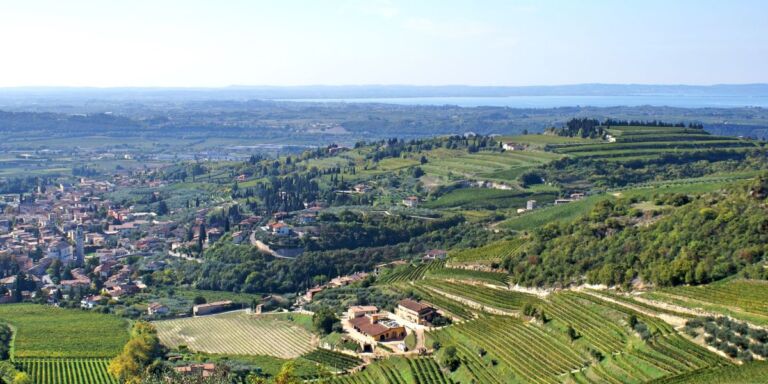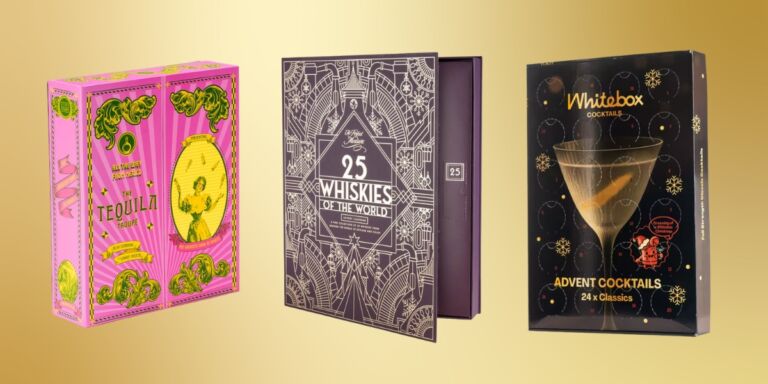SPONSORED CONTENT
For more than 160 years, Herederos del Marqués de Riscal has been forging its reputation – and, with it, the reputation of Rioja, too. It is, after all, producers who tie together the beauty of the land, its vines and its natural climate to forge global renown. Wine only exists due to the strife and toil of the people who bring it to life – and that wine then comes to define a reputation over time.
For some producers, a history as rich as this can be a burden, stifling innovation and limiting progression. For Marqués de Riscal, it is simply a diary of 160 years of innovation and consistency. The original marqués, Camilo Hurtado de Amézaga, was well ahead of his time. The links between Rioja and Bordeaux are a crucial part of the region’s history, and it was Camilo who first brought the viticulture of the Médoc to Rioja, including 9,000 young Cabernet Sauvignon vines.

The core reason behind the success of Marqués de Riscal lies first and foremost in these vineyards. The current fashion in Rioja is for terroir-specific labelling, to showcase the individual villages and vineyards that make up the mosaic of the region. Few producers, however, have built the wealth of vineyard sites that Marqués de Riscal has controlled for more than a century. The bodega manages 1,440 hectares of mainly Tempranillo and Graciano, with 500ha of its vineyards surrounding its home village of Elciego.
The oldest of these vines are integral to the production of Marqués de Riscal´s flagship Barón de Chirel Reserva. 80-to-110 year-old Tempranillo vines make up the majority of a wine that is considered a precursor of new-era Rioja.. The wine’s first vintage was 1986, and it is a cuvée that showcases the tradition and modernity of Rioja. It is also a wine that seems to improve with every release.
This is a serious, structured wine with a richness of fruit, lightness of touch and perfectly integrated French oak. It combines the very best of Rioja and Bordeaux, with tannins so sweet that many find it hard to resist opening young, although patient cellaring brings its own rewards. Barón de Chirel can age for more than a decade, but six to eight years after the vintage is often ideal.


In a more traditional mould are the Gran Reserva and Reserva wines of Marqués de Riscal, the backbone of the collection. Riscal’s Gran Reserva is rich and smooth yet wonderfully fresh, and there are few better ambassadors for Rioja’s signature tempranillo grape – although the bodega’s latest release, XR Reserva, is a worthy contender in only its second year. The wine was born in the tradition of the Bordeaux cellar masters, with the Riscal winemaker marking some of the barrels in chalk with the letters XR, on account of them showing certain characteristics not present in the other barrels. XR is a smoky, powerful wine with more than a passing nod to Bordeaux (there is no Cabernet Sauvignon here, but its dense structure invokes the Médoc). It is broad, long, meaty and structured, with wonderfully polished tannins.
Other notable wines in the portfolio include Finca Torrea, an avant-garde Rioja. Black-fruited, intense and spicy with hints of new oak and supple, soft tannins. Rounding off the collection is the versatile, rounded Arienzo de Marqués de Riscal, a young, red-fruited Tempranillo blend complemented by a tinge of sweet American oak.

In the 1970s, Marqués de Riscal made the ambitious decision to move white-wine production to another region entirely: Rueda, in nearby Castilla y León. This was a bold move: Verdejo, the indigenous grape of Rueda, has a tendency to oxidise. Producing fresh, young white wines was considered impossible, and historically, Rueda had focused on the nutty, rancio-style wines that had been developed in medieval times.
The team at Marqués de Riscal saw that under the right conditions, Verdejo could be much more than that. By harvesting during cooler hours, practising strict selection in the winery and using temperature-controlled stainless-steel tanks, the potential of the grape was realised. Zesty, aromatic and refreshing, it’s now one of Spain´s best-known grape varieties.
Largely on the strength of these efforts, DO Rueda was created in 1980 and Riscal introduced the first plantings of Sauvignon Blanc to the region. This would go on to become an important blending partner for Verdejo, as well as making crisp varietal wines.
Today, Marqués de Riscal is the largest landowner in Rueda, managing more than 330ha. As in Rioja, old vines are cherished, and many of the original vines are now reaching their half-century. The very best go into the flagship wine, Barón de Chirel Verdejo Viñas Centenarias, made from pre-phylloxera vines with an average age of more than 100 years. It’s a beautiful wine, combining the freshness and delicate aromas of Verdejo with the weight and depth of the old vines, and a touch of smoke and toast from the oak vats.
As well as pioneering new regions and technologies, there’s also a concerted push towards organic viticulture at Riscal, still a rarity among growers here. Its Finca Montico is a wine that showcases the zesty, herbal side of Verdejo with its fresh peach, fennel and citrus flavours – entirely from organically grown grapes; a classic Verdejo and an organically grown Sauvignon Blanc complete the Rueda portfolio.
The current fashion in Rioja is for terroir-specific labelling, and few producers here have built the wealth of vineyard sites that Marqués de Riscal has controlled for more than a century.
For many people, the most recognisable symbol of Marques de Riscal will be its incredible City of Wine, one of Spain’s most ambitious enotourism projects. The flowing titanium arcs and curves of Frank Gehry’s awe-inspiring hotel at Elciego, completed in 2006 and now operated by Marriott Hotels, has come to define modern Rioja. Its Michelin-starred restaurant, spa, convention centre and one of the world’s greatest wine libraries explains why Riscal is one of Europe’s most frequently visited wineries.
Yet this is only a fragment of the overall picture. It is the wines of Marqués de Riscal that tell the true story. They are now available in more than 100 countries, and the bodega shows no signs of slowing down. Over the coming years, expect an evolution of the red wines of Castilla y León, a determined push towards organic viticulture, a focus on highlighting individual vineyards in Rioja and even a project in the Basque country. The next century and a half is shaping up to be as interesting as this fine bodega’s first 160 years.







